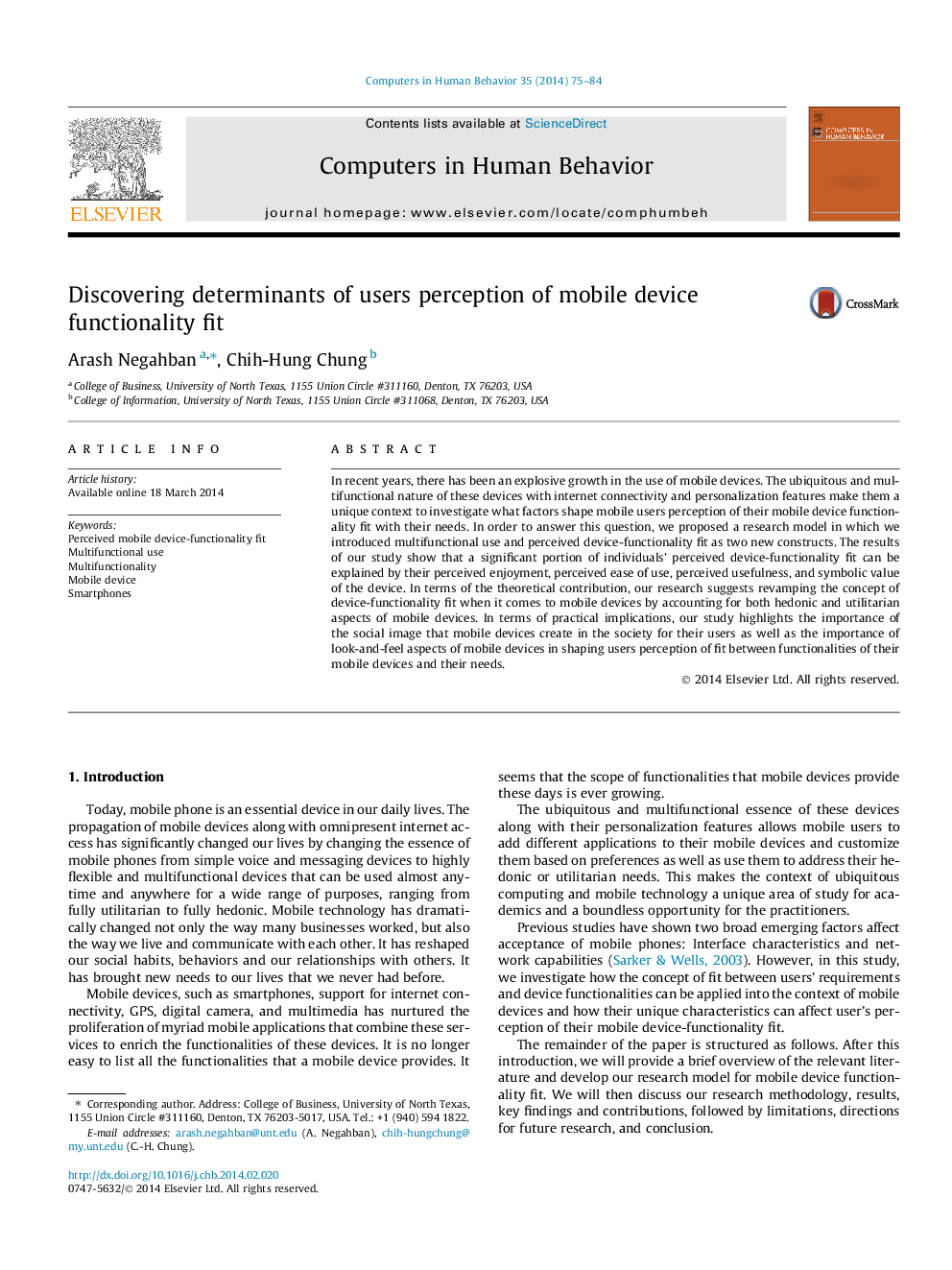| Article ID | Journal | Published Year | Pages | File Type |
|---|---|---|---|---|
| 350505 | Computers in Human Behavior | 2014 | 10 Pages |
•We defined and measured perceived mobile device functionality fit (PMDFF).•We measured how adoption factors and device multifunctionality impact PMDFF.•We defined and measured mobile device multifunctionality based on usage behavior.
In recent years, there has been an explosive growth in the use of mobile devices. The ubiquitous and multifunctional nature of these devices with internet connectivity and personalization features make them a unique context to investigate what factors shape mobile users perception of their mobile device functionality fit with their needs. In order to answer this question, we proposed a research model in which we introduced multifunctional use and perceived device-functionality fit as two new constructs. The results of our study show that a significant portion of individuals’ perceived device-functionality fit can be explained by their perceived enjoyment, perceived ease of use, perceived usefulness, and symbolic value of the device. In terms of the theoretical contribution, our research suggests revamping the concept of device-functionality fit when it comes to mobile devices by accounting for both hedonic and utilitarian aspects of mobile devices. In terms of practical implications, our study highlights the importance of the social image that mobile devices create in the society for their users as well as the importance of look-and-feel aspects of mobile devices in shaping users perception of fit between functionalities of their mobile devices and their needs.
